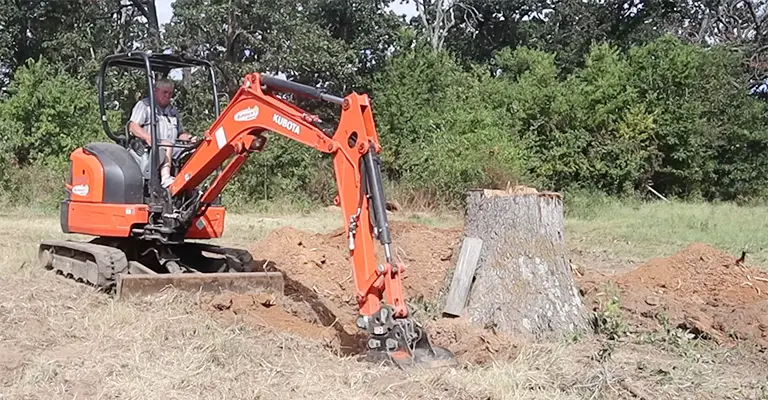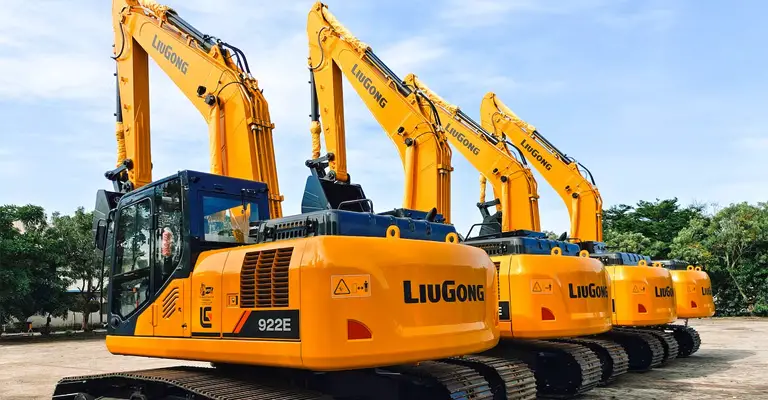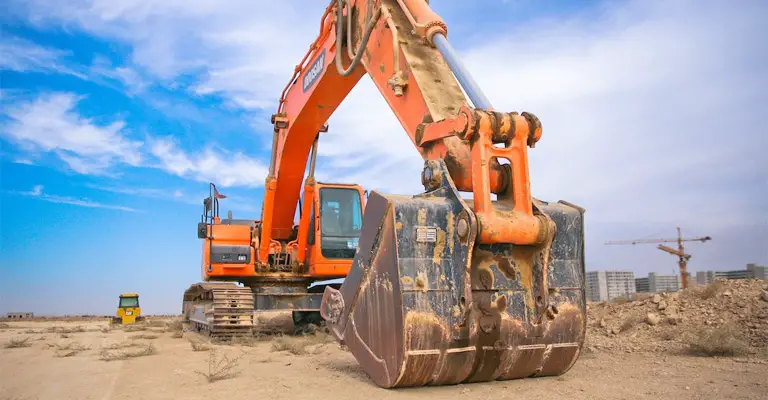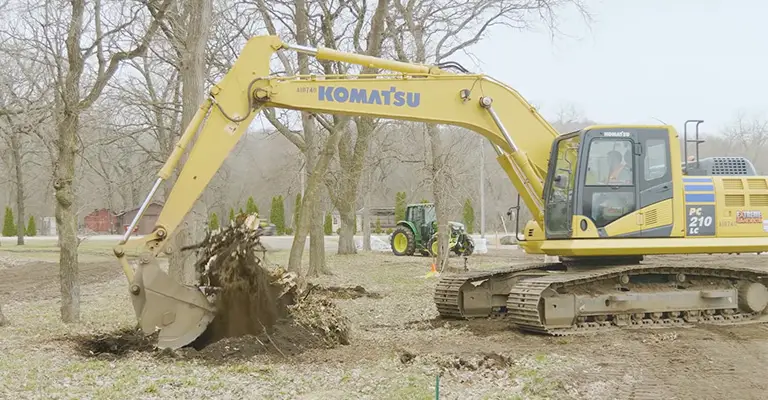Stumps can be a stubborn reminder of a once towering tree, impeding the aesthetics of your landscape or hindering construction and landscaping projects.
If you’ve decided it’s time to bid farewell to these unsightly remnants, you may wonder what size of the excavator best suits the task.
Medium-sized excavators weigh between 6 – 10tons and can lift 20 – 50 tons. It’s best to use this machine for moderately sized tree stumps with substantial roots that need more power to remove.
Choosing the right equipment for stump removal is crucial for efficiency, safety, and achieving the desired results.
Determining The Right Size Excavator For Stump Removal

Excavators come in different sizes depending on the size of the stumps they are meant to remove. In general, the bigger the stump, the bigger the excavator should be. Indeed, you must dig deeper to expose the root ball.
As a side note, there are other methods of removing stumps, such as grinding. A mini excavator of any size should be able to handle grinding stumps of any size, regardless of how old the tree or how large the stump is.
Rather than renting a machine, I recommend bringing your stump grinder and ensuring it is a decent size.
In addition, there will be less cleanup to do since the stumps can be removed. This option is much more time efficient and considerably cheaper than renting a bucket wheel.
The stump will leave a large hole once it has been removed. Making the stump a small hole is much less problematic and easier to replace. During the winter, the grindings become mulch for the woodlands.
You should consider hiring a giant machine, like a 20-ton if you wish to use an excavator for the first time. Though it may seem more expensive, a skilled operator can remove those stumps quickly compared to days if you rent them.
Different Types Of Excavators

If you want to remove tree stumps, knowing what type of excavator you will need is important.
You will not only lose money if you rent an excavator and it is not adequate, but you will also waste time if you rent the wrong one. Now let’s take a look at the different types of excavators and which size will suit your needs.
Basically, excavators fall into five sizes: mini, medium, large, extra-large, and bucket-wheel excavators.
Mini
For short to medium-sized stumps, a mini excavator can do the job. Nonetheless, a medium-sized excavator is best for dealing with large tree stumps.
Mini excavators are usually the smallest excavators you can purchase on the market. The machines are usually used in tight spaces since they can handle weights between 1 and 20 tons.
Also, they are popular for removing stumps in people’s yards and for small-scale landscaping projects.
Medium
These excavators are used for DIY and professional construction projects and can handle 20-50 tons of weight.
Additionally, they are used for small-scale demolition jobs and the removal of tree stumps. Furthermore, these excavators are used for digging small lakes or ponds.
Large
Typically, large excavators are used for large-scale construction and demolition projects and can handle 50 to 100 tons of weight. Excavators this large are rarely needed for stump removal.
XL and Bucket Wheel
Heavy excavators can handle up to 15,000 tons of weight. These machines are extra large bucket-wheel excavators. These are only used for large-scale projects.
Factors You Need to Take into Account Before Renting or Hiring an Excavator

Identify your requirements before deciding what size excavator you’ll need.
Location
Your stump might be located in the backyard, but if there isn’t much access, it’ll be challenging to bring even a medium-sized excavator.
You will have to use the size of machinery you can bring onto the property, even if you are dealing with a giant stump. Sometimes you should hire or rent a stump grinder to do the job.
Size Of The Stumps
A smaller stump might be a better choice if you don’t have access constraints. Using a mini excavator is easy when you need to remove small to medium-sized stumps.
Typically, mini excavators can reach between 6-8 feet, which is more than adequate for small to medium-sized trees.
You might need a medium excavator when removing large stumps. You should also consider the machine’s reach when deciding the excavator’s size.
A large excavator is needed to remove large tree stumps entirely and efficiently, starting at a depth of 10-12 feet.
When choosing an excavator size, the weight of the stump and its root ball also plays an important role.
Get a Rough Idea of How Much Dirt Needs to Be Replaced
When trying to remove compacted dirt, you’ll have to remove much more of it than when removing loose soil. In general, larger excavators have a larger bucket since they are larger by definition.
To get a rough estimate of how much you will need to dig, try digging a little with a shovel when surveying the site. If you want to remove the stump, you must get your bucket under it.
What Size Excavator Do You Need for Removing Tree Stumps?
A small or mini-excavator will suffice when removing small to medium-sized tree stumps. In most cases, the stump diameter will be 28 inches, or a root ball size of 50-60 inches can be excavated with a mini excavator.
In addition to the weight of the machine you’re using, this will also matter. It is only necessary to use an excavator of medium size when removing large stumps from trees.
Final Words
A small or mini excavator can often handle even large trees. Besides being portable, they can also be moved around easily and accessed from backyards as well. You may need a large excavator to remove a giant tree, but if so, you should hire professionals.








